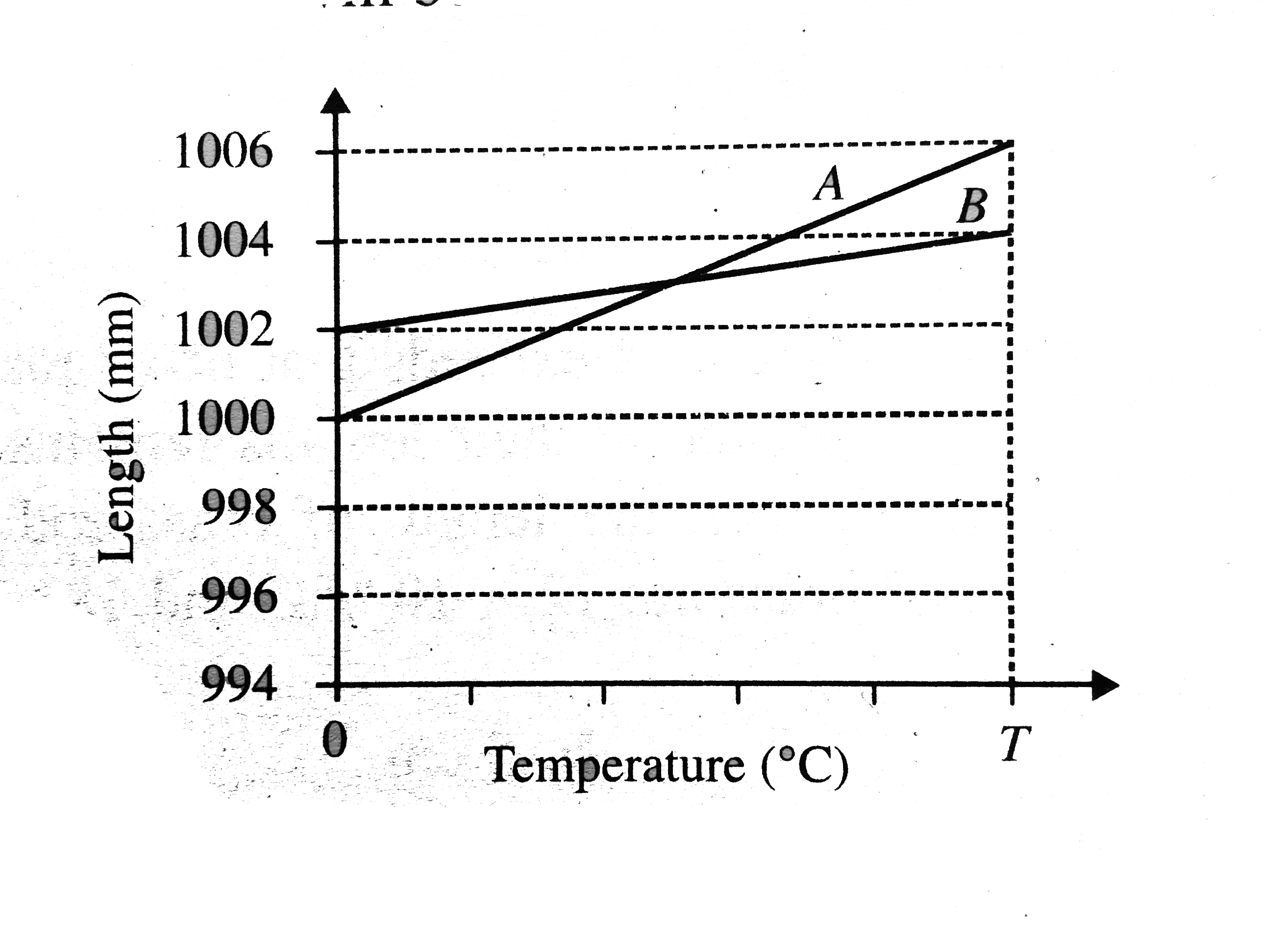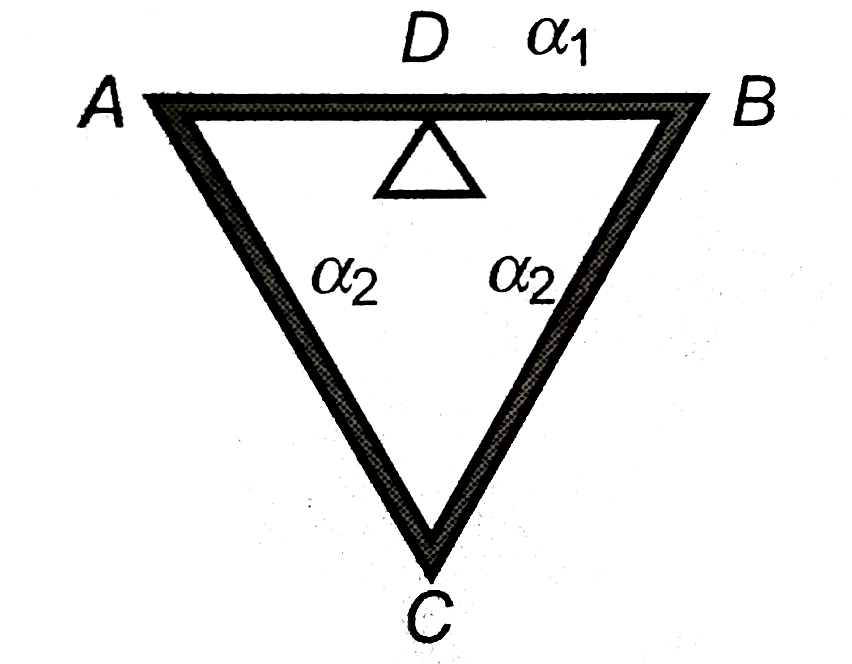If I is the moment of inertia of a solid body having α-coefficient of linear expansion then the change in I corresponding to a small change in temperature ΔT is
αIΔT
12αIΔT
2αIΔT
3αIΔT
The correct Answer is:C
To solve the problem of finding the change in the moment of inertia (I) of a solid body due to a small change in temperature (ΔT), we can follow these steps:
1. Understanding Moment of Inertia:
The moment of inertia (I) of a solid body is proportional to the square of its radius (r). We can express this relationship as:
I=kr2
where k is a proportionality constant.
2. Differentiating the Moment of Inertia:
To find the change in moment of inertia, we differentiate I with respect to r:
dIdr=2kr
From this, we can express the change in moment of inertia (dI) in terms of the change in radius (dR):
dI=2krdR
3. Expressing Change in Radius:
According to the linear expansion formula, the change in any length (in this case, the radius) due to a change in temperature is given by:
ΔR=αΔT
where α is the coefficient of linear expansion.
4. Substituting Change in Radius:
We can substitute ΔR into the equation for dI:
dI=2krΔR=2kr(αΔT)
5. Relating to Moment of Inertia:
Since we know that I=kr2, we can replace kr in the equation:
dI=2(Ir)αΔT
Simplifying this gives:
dI=2IαΔT
6. Final Result:
Therefore, the change in moment of inertia corresponding to a small change in temperature ΔT is:
ΔI=2IαΔT
Conclusion:
The answer to the question is:
ΔI=2IαΔT
The moment of inertia (I) of a solid body is proportional to the square of its radius (r). We can express this relationship as:
I=kr2
where k is a proportionality constant.
To find the change in moment of inertia, we differentiate I with respect to r:
dIdr=2kr
From this, we can express the change in moment of inertia (dI) in terms of the change in radius (dR):
dI=2krdR
According to the linear expansion formula, the change in any length (in this case, the radius) due to a change in temperature is given by:
ΔR=αΔT
where α is the coefficient of linear expansion.
We can substitute ΔR into the equation for dI:
dI=2krΔR=2kr(αΔT)
Since we know that I=kr2, we can replace kr in the equation:
dI=2(Ir)αΔT
Simplifying this gives:
dI=2IαΔT
Therefore, the change in moment of inertia corresponding to a small change in temperature ΔT is:
ΔI=2IαΔT
The answer to the question is:
ΔI=2IαΔT
Topper's Solved these Questions
- CALORIMETRY AND THERMAL EXPANSIONBOOK - RESONANCE ENGLISHCHAPTER - CALORIMETRY AND THERMAL EXPANSIONEXERCISE - Exercise-2
1 Videos
- CALORIMETRY AND THERMAL EXPANSIONBOOK - RESONANCE ENGLISHCHAPTER - CALORIMETRY AND THERMAL EXPANSIONEXERCISE - Exercie-3
1 Videos
- CALORIMETRY AND THERMAL EXPANSIONBOOK - RESONANCE ENGLISHCHAPTER - CALORIMETRY AND THERMAL EXPANSIONEXERCISE - Exercise-1
1 Videos
- CALORIMETRYBOOK - RESONANCE ENGLISHCHAPTER - CALORIMETRYEXERCISE - Exercise
19 Videos
- CAPACITORBOOK - RESONANCE ENGLISHCHAPTER - CAPACITOREXERCISE - Exercise
45 Videos
Similar Questions
find out the increase in moment of inertia I of a uniform rod (coefficient of linear expansion α) about its perpendicular bisector when its temperature is slightly increased by ΔT.
View SolutionA bob of simple pendulum is suspended by a metallic wire. If α is the coefficient of linear expansion and dθ is t he change in temperature then prove that percentage change in time period is 50αdθ.
View Solution
Knowledge Check
The radius of metal sphere at room temperature T is R and the coefficient of linear expansion of the metal is α. The sphere is heated a little by a temperature T, so that new temperature is T+ΔT. The increase in volume of sphere is approximately
A2πRαΔTBπR2αΔTC4πR3αΔT/3D4πR3αΔT
A thread of liquid is in a uniform capillary tube of length L. As measured by a ruler. The temperature of the tube and thread of liquid is raised by ΔT. If γ be the coefficient of volume expansion of the liquid and α be the coefficient of linear expansion of the material of the tube, then the increase ΔL in the length of the thread, again measured by the ruler will be
View SolutionA thread of liquid is in a uniform capillary tube of length L. As measured by a ruler. The temperature of the tube and thread of liquid is raised by ΔT. If γ be the coefficient of volume expansion of the liquid and α be the coefficient of linear expansion of the material of the tube, then the increase ΔL in the length of the thread, again measured by the ruler will be
View Solution
The variation of length of two metal rods A and B with change in temperature is shown in Fig. the coefficient of linear expansion αA for the metal A and the temperature T will be
View SolutionWhen the axis of rotation of a body changes does moment of inertia also change ? Why ?
View SolutionA solid cube is first floating in a liquid. The coefficient of linear expansion of cube is α and the coefficient of volume expansion of liquid is γ. On increasing the temperature of (liquid + cube) system, the cube will sink if

View SolutionThree rods of equal of length are joined to from an equilateral triangle ABC. D is the midpoint of AB. The coefficient of linear expansion is α1 for AB and α2 for AC and BC . If the distance DC remains constant for small changes in temperature,

View SolutionTwo straight metallic strips each of thickness t and length l are rivetted together. Their coefficients of linear expansions areα1andα2. If they are heated through temperature ΔT, the bimetallic strip will bend to form an arc of radius
View Solution
